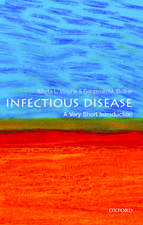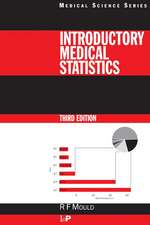Analysis of Complex Diseases: A Mathematical Perspective
Autor PhD Wangen Limba Engleză Hardback – 18 dec 2013
Focusing on diseases related to cellular energy metabolism, such as cancer and diabetes, Analysis of Complex Diseases: A Mathematical Perspective presents a holistic approach for illuminating the molecular mechanisms of these diseases and the evolutionary underpinning of their simultaneous epidemics. Using mathematics to identify patterns of deviation from normality, or the healthy state—spanning multiple levels from molecules to the organism—the author identifies a range of dynamical behaviors that correspond to either cellular physiology or pathology. He uses the information from multiple levels in order to develop a unified theory, which includes the discovery that certain diseases may stem from well-evolved, useful mechanisms activated in the wrong context.
This book is divided into three parts. Part I focuses on the organismal level to describe normal physiology and how the body as a whole meets its functional requirements. Part II addresses the subcellular, molecular level to elucidate the organizing principles of cellular biomolecules to meet the demands of the organism. Part III examines complex diseases by combining information from the organismal level and the molecular level, offering a paradigm that can be extended to the study of other categories of diseases.
| Toate formatele și edițiile | Preț | Express |
|---|---|---|
| Paperback (1) | 500.55 lei 6-8 săpt. | |
| CRC Press – 23 oct 2019 | 500.55 lei 6-8 săpt. | |
| Hardback (1) | 1272.54 lei 6-8 săpt. | |
| CRC Press – 18 dec 2013 | 1272.54 lei 6-8 săpt. |
Preț: 1272.54 lei
Preț vechi: 1551.88 lei
-18% Nou
Puncte Express: 1909
Preț estimativ în valută:
243.56€ • 253.32$ • 204.11£
243.56€ • 253.32$ • 204.11£
Carte tipărită la comandă
Livrare economică 13-27 martie
Preluare comenzi: 021 569.72.76
Specificații
ISBN-13: 9781466572218
ISBN-10: 1466572213
Pagini: 230
Ilustrații: 50 black & white illustrations, 4 black & white tables
Dimensiuni: 156 x 234 x 20 mm
Greutate: 0.45 kg
Ediția:New.
Editura: CRC Press
Colecția CRC Press
Locul publicării:Boca Raton, United States
ISBN-10: 1466572213
Pagini: 230
Ilustrații: 50 black & white illustrations, 4 black & white tables
Dimensiuni: 156 x 234 x 20 mm
Greutate: 0.45 kg
Ediția:New.
Editura: CRC Press
Colecția CRC Press
Locul publicării:Boca Raton, United States
Public țintă
Academic and Professional Practice & DevelopmentCuprins
Organismal Level: What Is Required. Food Intake and Energy Metabolism. Glucose Homeostasis. Optimal Glucose Homeostasis. Bistability as a Fundamental Phenomenon. Molecular Level: What Can Be Provided? Molecular Biology. Biomolecular Network. PI3K-AKT-TOR Pathway. Mathematical Analysis of Complex Diseases. Diseases Related to Metabolism. Mathematical Modeling of the PI3K-AKT-TOR Pathway. Fundamental Decomposition. Normal Phenotype. Disease Phenotypes. Tao of Diseases. References. Abbreviations. Appendix A Optimization of Insulin Action. Appendix B Derivation of the Master Equation of AKT Activation. Appendix C Singularity Theory. Appendix D Analysis of the Simplified Master Equation. Appendix E Analysis of the Master Equation. Index.
Notă biografică
Guanyu Wang obtained one PhD (in engineering) from Zhejiang University, China, in 1998 and one PhD (in medical sciences) from the University of Cologne, Germany, in 2005. As a postdoctoral fellow, he was initially at the School of Health Information of the University of Texas Health Science Center at Houston and then at the Department of Bioengineering, Rice University. He was an assistant professor of Pathology and Laboratory Medicine at the University of Texas Health Science Center at Houston and then an assistant professor of Physics at George Washington University. He is now an associate professor of biology at South University of Science and Technology of China, located in the city of Shenzhen.
Descriere
Focusing on diseases related to cellular energy metabolism, such as cancer and diabetes, this book presents a holistic perspective for illuminating the molecular mechanisms of these diseases and the evolutionary underpinning of their simultaneous epidemics. It demonstrates the importance of physical thinking and mathematical analysis in understanding complex systems. Taking an interdisciplinary look at this translational subject, the book explains how mathematical modeling and analysis are critical to the future of diagnostics and therapeutics in medicine.



















